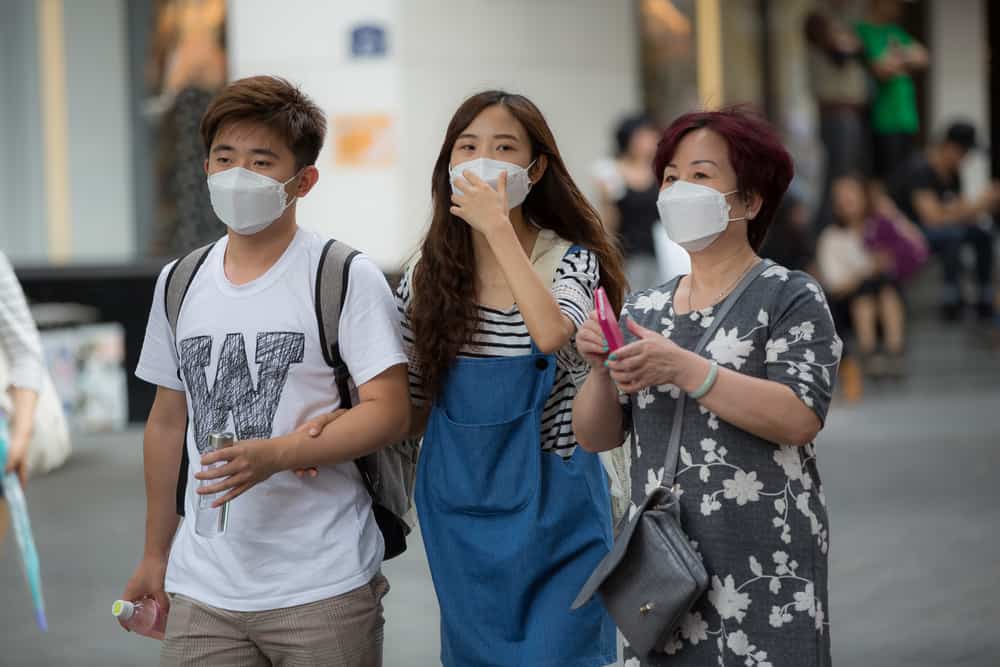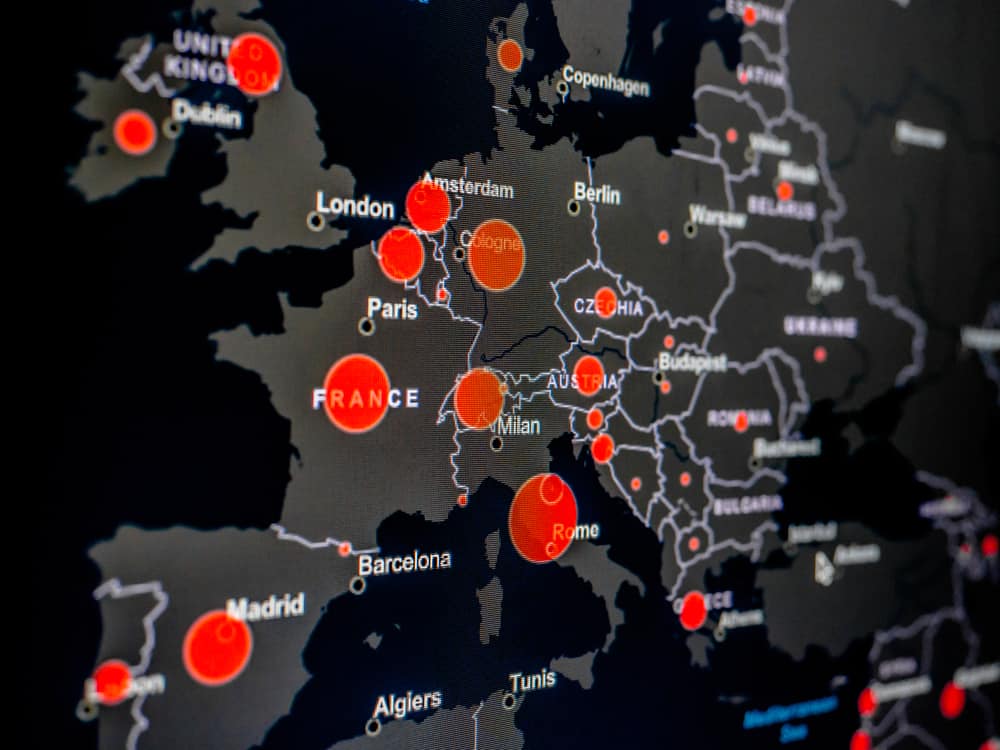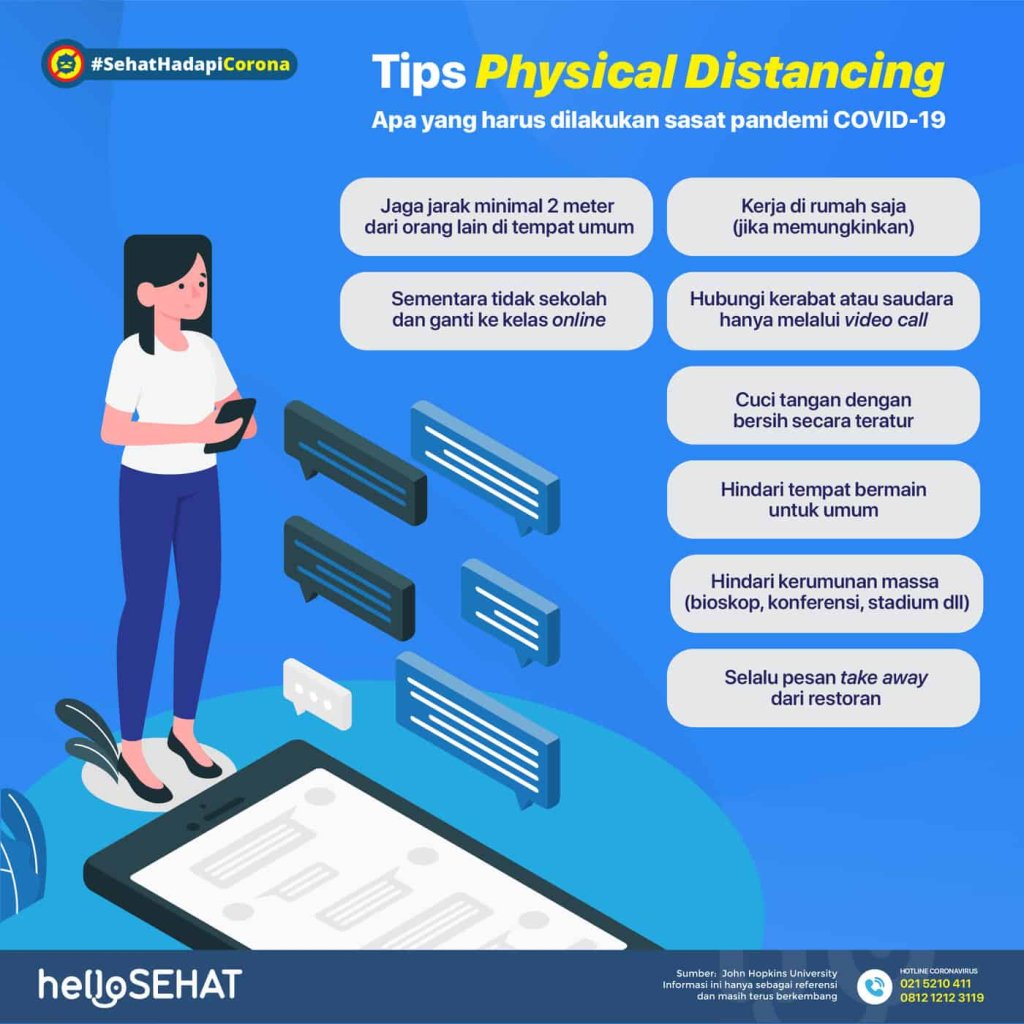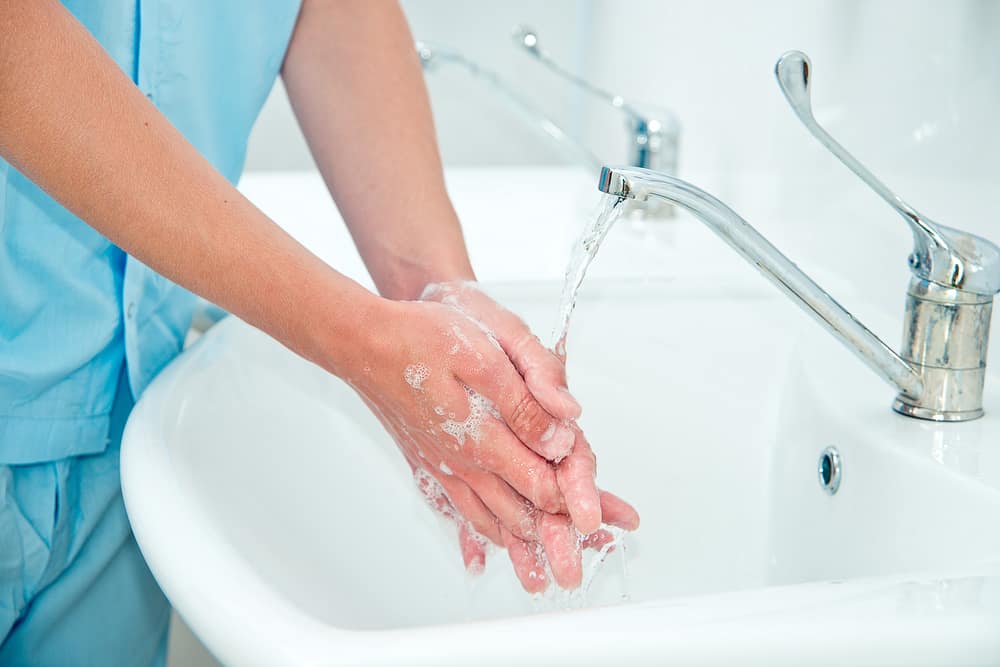Physical and Social Distancing to Reduce COVID-19 Transmission
Read all articles about coronavirus (COVID-19) here.
The COVID-19 outbreak has now infected more than one million cases globally and claimed tens of thousands of lives. In Indonesia alone, to date there have been more than 2000 cases and hundreds of patients who have died. As an effort to reduce the risk of COVID-19 transmission, the President of the Republic of Indonesia, Joko Widodo, advised to undergo it physical and social distancing.
Then, what is it physical distancing and social distancing? How is this social distancing thought to reduce the risk of transmission of the SARS-CoV-2 virus?
What is that physical distancing and social distancing?

Physical distancing is a preventive effort by taking physical distance from other people to reduce the risk of spreading COVID-19 infection. While social distancing is an act limiting social activities such as canceling group events to closing public facilities to avoid crowds.
When applied to reduce transmission of COVID-19, this method is used to slow down viral infections among high-risk populations. In addition, social distancing is also said to reduce the burden on health workers.
As is well known, the spread of COVID-19 itself can occur through droplets that come out of the mouth when sneezing, coughing, or talking. Although not the same as airborne which can spread through the air, the sparks can also move with a distance of more than 100 cm.
This means that the virus can spread to people who are close to infected people or it can be through contact with objects or surfaces that have been exposed to the virus.
Therefore, healthy people or people potentially infected with the virus need to keep a distance of at least two meters or the length of an adult’s body. Physical distancing also advises one not to touch others, including shaking hands.
This is because physical touch is the easiest mode of transmission and spread, especially in the case of COVID-19. To make it happen, one way that can be done is to limit social activities that make many people gather in one place.
Indeed, this method it cannot prevent 100% of transmission, but it can really help prevent the spread of the virus if you really follow these precautions as recommended.
If the number of cases which continues to increase every day is not guarded, it will certainly make it more difficult to handle it in the hospital because the patients keep arriving.
As a result, the number of health workers and facilities that are not comparable to these patients can increase the mortality rate.
Thus, governments in most of the infected countries have advised against traveling for a while unless it is an urgent matter.
Why physical and social distancing effective in reducing virus transmission?

If done correctly, physical and social distancing on a large scale can slow down the chain of person-to-person transmission of the virus. This is because most people who are infected can spread the virus at least five days before they develop symptoms.
Therefore, social distancing can help limit transmission, especially from people who are not aware that they are infected with the virus.
This method was actually used during the 1918 Spanish flu outbreak and was considered quite effective in several infected countries.
a study PNAS reveals that cities are doing physical distancing the early days of the pandemic had a fairly low mortality rate. Social distancing during the Spanish flu took the form of closing schools and banning public events.

According to Tom Inglesby, center director at John Hopkins Center for Health Security, this concept has actually been applied to two cities in China.
Guanghzhou City is one of the cities that has carried out disease control since the beginning of the COVID-19 outbreak. As a result, the city had a significantly lower number of hospitalized patients at the peak of the outbreak.
Meanwhile, physical distancing is also one of the few ways that can be done to prevent the transmission of viral infections. This is because the COVID-19 vaccine is still under development and there is no medicine to slow down viral infection.
Therefore, self-quarantine to consider the risk of transmission and spread of viral infection is quite important.
At the very least, you can protect yourself and family members at home even if not everyone is doing it.
Other measures to reduce the spread of disease

Social distancing needs to be done by everyone, especially for those of you who are unwell and the elderly with comorbidities, such as diabetes and heart disease.
Limiting social distancing also needs to be followed by maintaining one’s own health and hygiene. It sounds easy and simple, but washing your hands and following a cough etiquette has been shown to be quite effective in slowing the spread of SARS-CoV-2 infection.
If you are sick, use a mask that can cover the nose and mouth area to prevent the splash from spreading to the outer area. You can also use a mask as a precaution, especially when you have to travel and meet lots of people.
Regular surgical masks provide sufficient protection, if not available replace them with cloths such as scarves.
Meanwhile, other public health measures that can be used to limit the spread of infection are isolation and quarantine.
Isolation is a method used by a person when they are sick and have a contagious infection. At least, sick people will be separated from healthy people.
Self-isolation can actually be done, but it would be nice if you experience a number of symptoms related to COVID-19 to immediately consult a health service.
In most cases, isolation is voluntary. However, almost part of the government requires isolation of sick people to protect public health.
Meanwhile, people who are undergoing quarantine will also be separated from other people. Even if there are no symptoms, the possibility of transmission can still occur.
Another quarantine measure is to limit people who come and go to certain areas. Countries have the power to ensure that the quarantine process runs smoothly in their respective cities. Both isolation and quarantine can at least be done to slow the spread of infectious diseases.
Physical and social distancing it will not be effective if you do not maintain your own hygiene and health as an effort to reduce the risk of transmission and spread of COVID-19. Still getting enough sleep, fulfilling nutritional needs and regularly exercising at home at least maintaining the body’s endurance against disease outbreaks.
Read all articles about coronavirus (COVID-19) here.
Hello Health Group and Hello Sehat do not provide medical advice, diagnosis or treatment. Please check our editorial policy page for more detailed information.